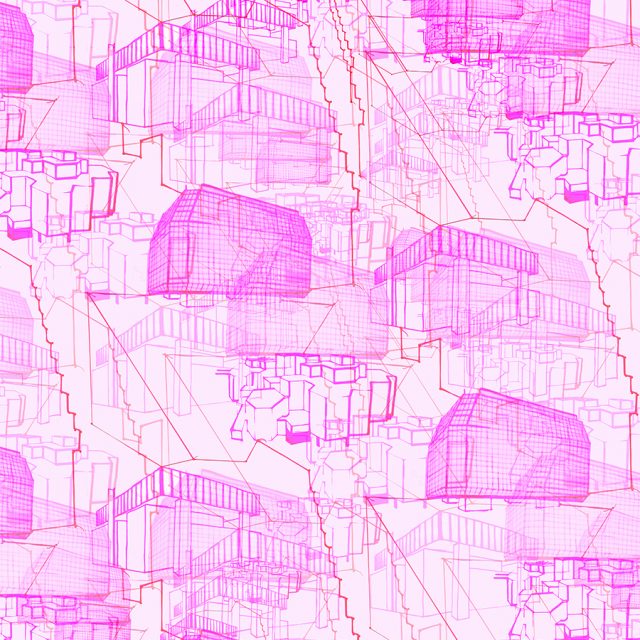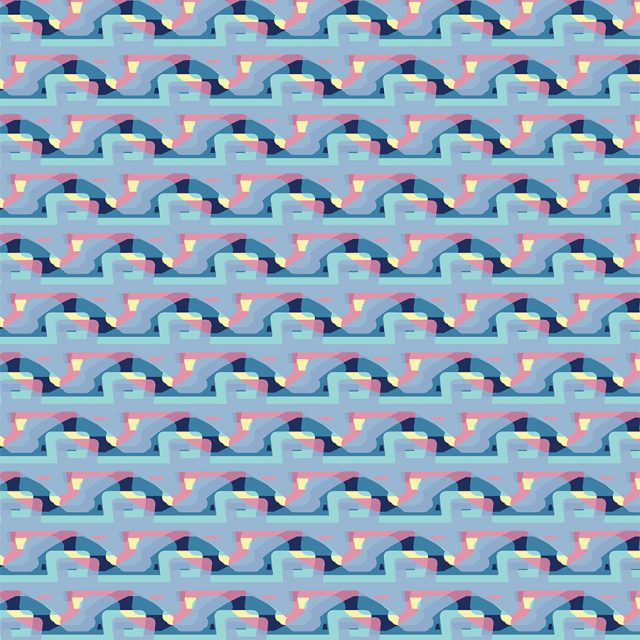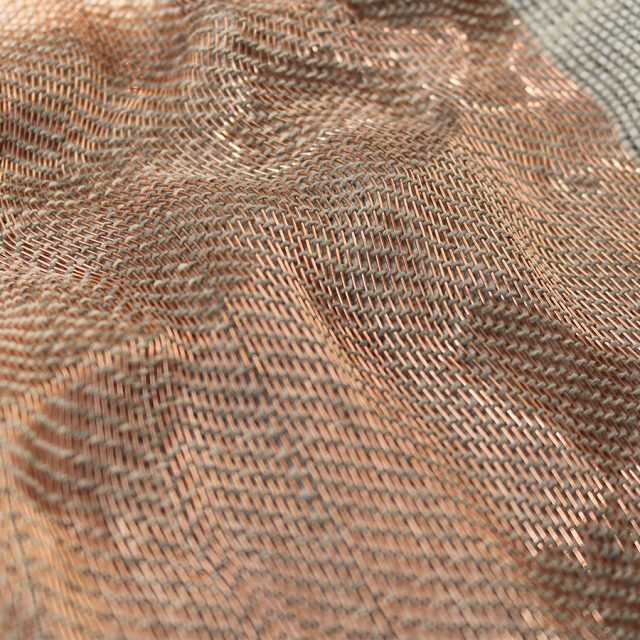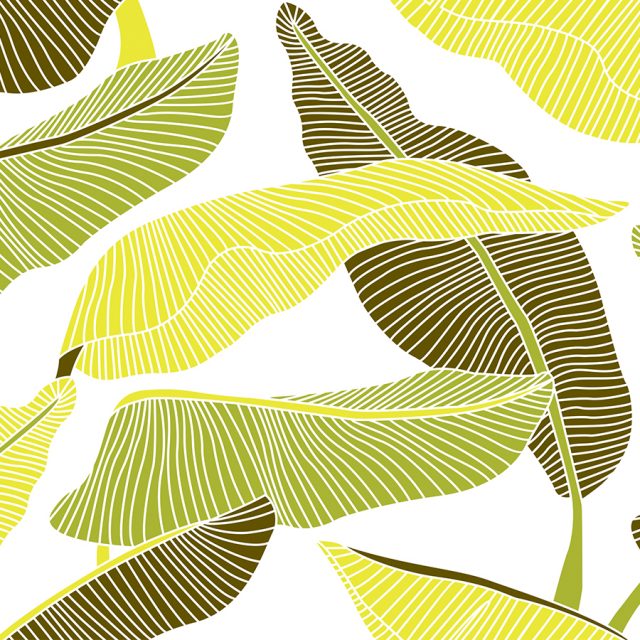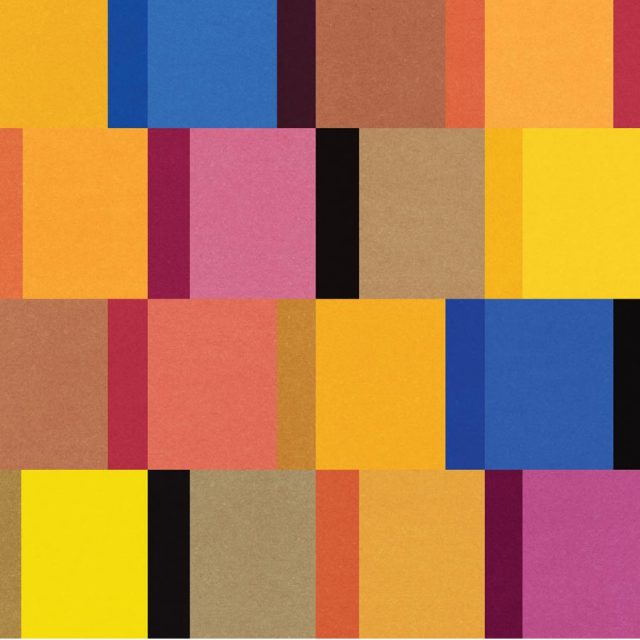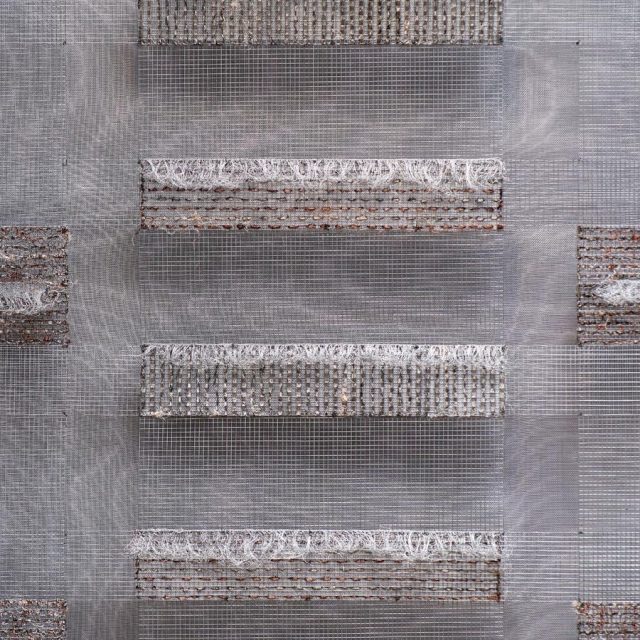design without borders – exhibition
10. 10 – 15. 11. 2020.
Kiscell Museum 1037 Budapest, Kiscelli u. 108. /map/
10. 10 – 15. 11. 2020.
Kiscell Museum 1037 Budapest, Kiscelli u. 108. /map/
Opening speech
Amb. Edit Szilágyiné Bátorfi
Executive Director
Visegrad Fund
Opening performance
Rita Góbi
dance
Dávid Szegő
drum
Contemporary carpet exhibition
10.24.2020
Péter Szűcs
07.11.2020
Madeline Hocking, Dániel Matei performers / composers / improvisers (CA / HU)
“I appreciate dwb a lot, both personally and professionally. It is an excellent exhibition, presenting great contemporary designers, but also it promotes cooperation and socially balanced design. Being a projectpartner for several years, allows me to see it as a very interesting and unique promotional opportunity, for both designers and companies. I enjoy a lot Design Without Borders project,each year it’s one of my “my be”destinations.”
Michał Piernikowski
Director of
ŁÓDŹ DESIGN FESTIVAL
(PL)
lodzdesign.com
”I was invited to Design Without Borders exhibition last year. My first impression was the enthusiasmand the passion with which Szilvia and Tamas organized the exhibition. As designer we have luck that our work coincides with our passion, so when a project is done with the heart is visible: this is the case of Design Without Borders. A beautiful exhibition where different products, different cultures, different traditions coexisted perfectly together.”
Leonardo Talarico
designer
(IT)
leonardotalarico.com
An exhibition series of designers, furniture, textile and jewellery designers and visual artists from Austria, the Czech Republic, Denmark, Estonia, Germany, Hungary, Italy, the Netherlands, Poland, Portugal, Romania, Slovakia, Spain and Switzerland; and an event series of contemporary dance and contemporary music
Incepted 15 years ago, this is one of the region’s most significant dynamically evolving independent exhibition and all-arts event series. This year the exhibition series will showcase the works of more than 140 designers, jewellery designers and visual artists hailing from 14 countries.
For the first time a small selection of the works will be exhibited in Bratislava and Vienna too.
The name refers both to the ever-growing number of international exhibitors and the interoperability of the various art disciplines. An express will of the curators is to demonstrate the wide array of possibilities in interpreting design. By broadening the concept, they lay emphasis on creative approach and innovation that are based on constant inspiration, dialogue between different social, professional and generation groups, the clashing of their divergent opinions, and systematically arranging and transmitting information. Design-based thinking also serves as the starting point for innovation, education, making strategies and even solving problems.
The works, projects, objects and related events showcased in the exhibition emphasise the importance of productive interaction between the various disciplines of art – the visual arts, design, as well as the visual and performing arts. The selection highlights not only the artists, but also the role of social responsibility, civil society and creators in society, as well as the importance of networking.
The exhibition features design objects in the narrower sense – one-off and small-batch furniture, home accessories, carpets and soft furnishings – as well as prototypes, contemporary jewellery, projects (and films about projects) that interpret genre boundaries freely, propositions that are eco-conscious, serve sustainable development or highlight the role of civil society in shaping society as a whole, and works that present the cultural and creative connections within gastronomy.
The organisers consider in-person networking especially important. Thus, on the professional day on the morrow of the opening exhibiting artists will deliver 10-minute presentations in English.
With regard to the epidemic situation, the way the professional day be conducted in will be announced under “Programmes” by 1 October the latest.
Created 5 years ago by textile designer Szilvia Szigeti, this project fosters cooperation between designers and manufacturers. A small selection of the latest results will be exhibited in Budapest, Bratislava and Vienna, whereas the entire range will be on display in the FUGA – Budapest Center of Architecture in December.
To acknowledge the exhibitors’ professional performance the organisers founded a design award in 2016 with the backing of the International Visegrad Fund primarily to support young artists. The aim of this accolade is to highlight the potential in design, as well as to the importance of sponsorship and social responsibility.
The jury, comprised of renowned professionals, looks for originality, innovative solutions and high design content.
The four winning artists will receive 400 000 HUF gross, and one designer will get the opportunity to participate free of charge in the Łódź Design Festival, one of Europe’s most significant design events.
The Design Without Borders Award is sponsored by: the International Visegrad Fund, the Horvath Art Foundation, Laguna Lakástextil Ltd., and art collectors Zsolt Somlói and Katalin Spengler.
For the third time, contemporary jewellery designers will be given a central role. They were selected by renowned curators including Cornelie Holzach, director of the Pforzheim Jewellery Museum; Elisabeth Heine, guest curator of the Pforzheim Jewellery Museum; Austrian jewellery artist Susanne Hammer; arts writer and collector Katalin Spengler; and the organisers of Design Without Borders. The aim of the selection is to provide a picture of the most progressive novelties of the genre to guests that is as complete as possible.
The exhibition connects the representatives and audiences of various art disciplines too. The opening and closing ceremony will feature contemporary dance performances by the internationally acclaimed Góbi Dance Company, and there will be contemporary music events during the exhibition, this time connected to the guided tours.
Several tours will be guided by the curators and will involve the exhibiting artists.
More information under “Programmes”.
Since 2004 the exhibition has been organised by interior designer Tamás Radnóti and textile designer and Ferenczy Noémi Award holder Szilvia Szigeti. Both are graduates of the Moholy-Nagy University of Art and Design and were fellows of the Akademie Schloss Solitude of Stuttgart. Szilvia Szigeti is currently a member of the Akademie Schloss Solitude board of trustees. Working as designers, they have participated in numerous Hungarian and international exhibitions and their activity has earned them a good number of professional recognitions. Among others they were awarded the Lajos Kozma Arts and Crafts Fellowship, the Hungarian Design Award, the Design Management Award and the Ferenczy Noémi Award. In 1994 they founded the Eventuell Gallery and besides the exhibitions organised at this creative workshop they have organised nearly 200 Hungarian and international events (The textile and fashion shows of Textivál in the 90s in the Open-Air Theatre and the Kunsthalle; or the BútoroSOKK exhibition of avant-garde furniture designers in the Museum of Applied Arts.). Since 2004 they have organised madeinhungary, which focuses on Hungarian designers; and the MeeD exhibitions since 2012, which concentrate on international artists. During the years they have worked together with almost 4000 designers and fellow artists.
Contact: szilvisziget@gmail.com
She learnt knitting from her grandmother when she was young. Her enthusiasm for creations made from a single yarn hasn’t diminished since and her career is defined by experimentation. She got her degree at the Zurich University of the Arts, and although her studies had essentially focussed on woven materials, ever since buying her first knitting machine she has almost exclusively designed and made crocheted fabrics. Her works do not follow expectations or rules; she has a penchant for mixing luxury-quality and raw-feeling materials. These unexpected mixtures result in exciting experimental compositions that are playful, are usually 3D and give the human body a sculpture-like appearance. Besides clothing Feilchenfeldt also creates accessories that take shape as either spectacular jewellery or unique hats.
After graduating she almost immediately won the Brunschwig Prize for Applied Arts which established her career both in Switzerland and abroad. In 2000 she moved to Paris and opened her own studio. She began working as a costume designer, creating progressive and impressive costumes for theatre and various other stage productions for nearly a decade. She subsequently returned to the fashion industry where she now creates breathtaking pieces commissioned by haute couture fashion houses.
Cécile Feilchenfeldt
textile designer
Imagination can be seen as the ability to advance beyond the objective world. It is based on our imagination, which enables thinking in all its forms. Imagination is a prerequisite for empathy, the ability to empathize with other people and enables purposeful actions. As part of my design, I address the importance of fantasy on the basis of dealing with imaginary places and questioning realities. Inspired by dreams and nature, I use natural finds such as tree barks, branches, stones and precious stones to model compositions that have an earthly and at the same time supernatural appearance. Precious metals and composites, as well as a touch of magic, are assisting me to create an extraordinary contrast between imagination and reality. Objects are formed that give the appearance of originating in the nature of another world. Artifacts of distant worlds as jewels for earthly moments. My jewelry is a homage to nature and a call to dream. Dreams form thoughts, thoughts form words, words form actions, actions form habits, habits form personality. We are what we think. We shape the world with our thoughts. I see my jewelry as a reminder of the importance of fantasy in our lives. Dreaming Jewelry!
Jil Koehn
jewellery designer
”The main component of LINOLEUM products is the material PVC, the floor covering which we know mainly as lino. Klatovská Floor coverings PN collects PVC scraps in a container; and I decided to take these scraps and use them interestingly. During the tests where I wanted to see how PVC behaves during processing I discovered several ways of working with lino. Some
even ended up imitating various materials. I used technologies that are not completely typical for working with lino, such as turning.”
Text: Monika Beníšková
Home is a brand based on the handicraft traditions of the designer’s hometown and aims to provide more opportunities for the local craftspeople.
The town of Ada used to be the small-craft centre of Yugoslavia; nowadays locals mostly move away. This collection mingles local values and professional knowledge with the toolkit of contemporary design to create a new market opportunity for the community. The long-term goals of the project include creating personal relationships between the creators – so products are deliberately created to require the cooperation of several workshops.
Set out collectively and under Bálint Szalai’s direction, the product range includes small-batch high-quality everyday items that not only serve functional needs but reinforce the sense of homeliness. Reserved and radiating serenity, the collection includes stools, various storage bins, serving plates and candle holders. They are organically united in being natural and using primarily earthy colours, but bear the mark of their creator’s hand upon themselves. The uniform appearance and the webshop are the essence of the initiative, since they provide a springboard for creators, who can now reach a broader and even international audience.
The name comes from the designer’s personal experience: A simple and unambiguous answer to the question „Hi, are you home?”.
Supervisor: Panni Pais
The sculpture-like objects of this Catalan designer are a unique mixture of flowing shapes and precision typical of the digital age.
A testament to Quittlet’s talent is that already in 2001 – at the start of his career – he was noticed by French design genius Philippe Starck and they ended up working together for many years. They have created many objects together that can nowadays be considered iconic.
Quittlet founded his own studio in 2011 in Barcelona. Form and function are indivisibly locked together in his creations. His style is easily recognisable, and his perspective impresses both the emotions and the tactile senses. He usually designs seating furniture and furnishing accessories, which then appear in the range of renowned manufacturers such as Alias, Christofle, Desalto or Kartell. Quitllet was born on Ibiza, and the island still influences his works. As he puts it: For me Ibiza is not just a place, it’s a state of mind.
Made at the request of Vondom of Spain, the Ibiza series is part of the brand’s first environmentally conscious collection, which was made using recycled fishing nets and other plastic waste washed up on the island’s shores. Fit for indoors as well as outdoors, this chair family beckons for a long sit-down. „The wonderful terraces of sunny Ibiza with their characteristics wicker furniture are a defining experience for me. I am evoking the memory of these finely curved pieces.”
A winner of the 2020 Red Dot Design Awards
gyártó / manufacturer:
VONDOM
partner:
BUDAPEST BARCELÓNA KFT
The special objects and installations of Shahar Livne are born out of her research into nature, natural sciences (specifically biology) and philosophy, their narratives embodied by various raw material experiments.
The basis of the design project, which also contributes to scientific research, is the idea of an imagined future. „Environmental changes triggered by the waste generated by humanity inevitably endanger and even transform nature. Microplastics penetrate the earth and the ecosystem so deep that they combine and transform into a totally new raw material that is a peculiar and utopian mixture of nature and culture.” This is only partly a figment of the imagination. In 2014 a “rock” was discovered on the beaches of Hawaii. It was made up of sand and waste and was dubbed a plastiglomerate. In her proposal the artist asks questions like ‘how do humans relate to a new material that is synthetic (man-made) in its origin’ or ‘how can its specific properties become the basis of a design process’.
Beazley Designs of the Year 2018 finalist
New Material Award 2018 finalist
Recycling plays an ever more important role in the work of designers. Nowadays it is vital, a most fundamental element of a designer’s way of thinking responsibly.There are many exciting examples for reprocessing paper, metals, textiles or even leftover food, but substantially fewer ones for recycling mixed household waste that is generated every single day. In Europe a significant proportion of municipal waste still ends up on landfills. A smaller proportion is incinerated to generate electricity. One residue of incineration is bottom ash. There haven’t really been experiments regarding the usability of this ash, although a single Dutch one-person household generates almost 60 kilos of it in a year. Carissa Ten Tije offers a progressive special/unique way to repurpose this lifeless gray mass as a secondary raw material. Modular segments were pressed from the ash and were used to make this stone bench. Although it hints at the ash from whence it came with its colour and terrazzo-like texture, it appears fresh and impressive.
The creation of the bench was preceded by thorough research into the topic, the results and observations of which were compiled by the designer in a useful publication.
Henry Baumann is an artist living in Berlin, who specialises in using materials that seemingly have no value and turning them into something extraordinary. Strawberry boxes and large industrial cable drums are just two of the sources that he has transformed into reclining chairs and tables, recycling these and giving them new life.
For Baumann, taking something apart is as interesting as making something new. Never drawing initial sketches but instead working instinctively, he says: “When I’m trying out these materials and testing them, I often start with an initial idea and it fails. But through this failure something else comes. I’m fascinated by this process.”
His shapes derive from the materials themselves, using their inherent qualities to create a new form. He turns cable drums into a single spiral using just one cut, then gluing and clamping these together into organic shapes; he deconstructs strawberry boxes so that they are just wood panels and nails, shifting these into three- dimensional forms that are reminiscent of ornate North African patterns. For him, refuse is about re-use: “I’m interested in how to find the right purpose and the beauty in discarded matter.”
Baumann has a Bachelor’s degree in Product Design from the Akademie beeldende Kunsten Maastricht, the Netherlands and won his first Recycling Design Award in 2012. He has private clients in Maastricht and commercial clients include Novotel. His work has been exhibited in Vienna, Düsseldorf, Cologne, Watou, Maastricht, Washington, Milan, Berlin, Hamburg, Hasselt, Munich, Eindhoven and Amsterdam, and his objects are in museum collections including Kunstfestival Watou, Belgium and Kunstkraftwerk, Leipzig.
Baumann is available for both private and commercial commissions.
Henry Baumann
designer
Balázs Csizik uses plastic waste found on the beach to create artistic compositions reminiscent of suprematist images
One of humanity’s most pressing issues is to reduce pollution in the oceans, because according to predictions they will contain more plastic than fish by the year 2050. So far ca. 150 million tons of waste have made it into the seas, however this figure is rising daily at a disturbing rate. The sight of discarded straws, plastic cups, soft drink bottles and other piles of synthetic waste has alas become part of the beach landscape; but even more worryingly these slowly but surely choke wildlife too. These various pieces of plastic occasionally arrange themselves into interesting compositions that reveal – at a push – certain aesthetic features. This is what this series endeavours to demonstrate, where the viewer sees the objects as artworks and as documents of a problem that needs to be tackled at the same time.
Balázs Csizik has a master’s degree in visual communication, his field of research is the situation of contemporary Hungarian abstract photography. He is primarily interested in contemporary architecture and abstract art styles. Beyond this he mainly studies the work of constructivist artists from the turn of the 20th century and their works based on the reduction of colour and shape. His images are characterised by the play with plane shapes and the compositions originating from them.
The series is a personal salute to Kazimir Malevich, the genius father of Suprematism.
Hot Wire Extensions is a young sustainable design brand lead by Swiss designer and material researcher Fabio Hendry.
Fostering material innovation and experimental engineering, Hot Wire Extensions presents an innovative manufacturing process, applied to a range of products, furniture, installations and special commissions. The process was developed as a response to the changing material landscape, critically analysing and questioning the consequences of technical innovation. Using waste SLS 3D nylon powder, a material that is currently not recycled, and inspired by the way a vine grows around a tree, a nichrome wire is shaped and placed within a container filled with nylon powder and silica sand. An electric current is sent through the wire, causing the mixture to solidify around the form leading to endless possibilities in shape, scale and application. Pieces are defined by the process’ unique organic bone-like aesthetic and characterised by the mindful exploration of material landscapes.
Rado Star Prize Switzerland for Young Talents 2019 nominee
Micheline Nahra has disassembled a four-person dinner setting and rebuilt it for one person, in a bid to make absence visible. A Dinner for one tells a story of loss, it is a signifier of absence, a former normalcy of life that is absent, and a situation that has been transformed into a memory. Starting from a table and four chairs, she deconstructed the objects into their constituent parts, worked on the individual elements and reconstructed the new table and chair.Raised in war-torn Lebanon, this process of deconstructing and reconstructing is a way of exploring the relationship between objects and the layering of stories in them.“Where I come from destruction is a reality and reconstruction is inevitable”. The pieces reflect the human need to retrace the past, preserve memories, and rebuild what is broken.
https://www.instagram.com/michelinenahra/
Design Academy Eindhoven
This expanding series features photos where the “landscape” is dominated by the former Berlin Wall. The project fits well into Meyer’s artistic praxis; she is fundamentally interested in the physical, sociological and psychological aspects that shape the character and spirit of a location. In her works she uses an analogue technique which she combines with the visual language and toolset typical for digital imaging. In the colour photos of the Berlin series one can see blurred and pixelated bands created using hand-embroidered cross-stitch that signify the former location of the Wall. Most of the photos show the central city districts, where the path of the former structure that divided the city for almost three decades can clearly be traced. There are also many photos, shot in the suburbs or the typical forested areas surrounding Berlin, where one can only find subtle traces or barely-visible clues.
The gesture of embroidery is a radical intervention, used primarily to highlight the unnaturalness of the Wall. The obscured, blurry sections make the landscape translucent, invoking something that is no longer there but to this day occupies an important place in individual and collective memory. „I was curious to see what lasting tangible effects the Wall still has – even though it was torn down decades ago. Memories and photos turn history into a nostalgic object; but how much do they influence our objective judgement of the past?”
A brand where traditional weaving techniques from all over the world meet an exciting way of recycling.
The result: A slew of unique handmade lamp shades. The initiative was conceived by designer Alvaro Catalán de Ocón in 2011 following his first visit to the Colombian Amazon. The thrown-away water bottles he saw there made him realise that the problem isn’t solely limited to the developed areas of the world. The project’s goal, besides creating an attractive design object, is to preserve a traditional handicraft method that is present in nearly every culture. Following the principle of ‘think global – act local’, the shades are created with the involvement of craftspeople local to Chile, Ghana, Ethiopia or Colombia among others; some of whom employ techniques that are more than 500 years old.
The design of the lamps was inspired by the bamboo tea whisk used for Japanese tea rituals, which is handmade from a single piece of bamboo and is split into 100 strings. Bottles are cut up into thin vertical strings which are basically the warp threads for the weaving process. The unique patterns, colours and shapes of the shade are worked onto this by the local weavers. And the electric wire can easily be fed through the bottle’s neck.
The concept is an uncanny combination of industrial production and handicraft. Just as the number stamped into the PET bottle indicates where it was made, so does the work of the craftspeople indicate their culture like a sort of grid reference number, providing an ethnographical and anthropological overview of the astonishing diversity of basket weaving.
This projects are about food; however, the subject is not food itself – rather its wider context, woven around a story.
Certain foods guide us back into the past like Ariadne’s thread; calling upon collective memory they create a sense of belonging and show us where we come from. The Churut series is comprised of dried fermented milk products from different parts of the world – from Mongolia through Central Asia and the Middle East all the way to Switzerland. Although the milk of different animals and similar fermentation processes are used, the shapes and usage are all the more diverse. The method originated in Mongolia, where it is called aaruul.
A spicy variant is part of the traditional cuisine of Armenian expats, who use it to flavour broth. A similar foodstuff is called kurt in Kazakhstan, qurut in Uzbekistan – where it is eaten as a snack with beer; in Afghanistan it is known as quroot, whereas the Jordanian variant is called jameed and is used for making broth. There is dried fermented milk in Iran and parts of Iraq inhabited by Kurds too. There it is called kask, and is dissolved in water and used as a sauce. The Greek and Cypriot variant is named trahanas. There the milk is mixed with grain and serves as a soup base. Another European variant is the schabziger from Switzerland; it is made from dried whey and the blue fenugreek plant. Its uses include grating it on pastas.
geschmacksarchiv.de
Milch für die Ewigkeit
Developed at the Massachusetts Institute of Technology (USA) by the Swiss designer duo, this chair fundamentally changes our ideas about sitting down.
Patrik Künzler studied molecular biology and wanted to become a race car driver; and Mark van Raai is an astrophysicist. The Limbic Chair is based on their diverse knowledge. When sitting down on a chair, we make a series of tiny movements without even realising it. These micro-movements activate the brain’s limbic system, which is responsible for adaptability, memory, learning efficiency, and even for motivation. This chair was designed so that we can easily adapt the most comfortable posture while the chair contributes to stimulating our brain. Instead of a fixed seat there is a rotating carbon fibre shell – mounted on a base with casters – that is in constant motion, but it still enables a lax and balanced posture. While performing activities we will feel relaxed, we will work more creatively, with more focus, and thus with greater efficiency. The Limbic Chair strengthens the spine muscles and can thus aid the rehabilitation of certain spinal problems. Coupled with the proprietary VR application it also works as an interface: like a computer mouse or joystick, it makes work quicker and games more exciting. All chairs are custom-made to the user’s body size and habits.
Winner of the Design Prize Switzerland 2019/2020
Through their work Zsófia Zala and Ádám Tóth not only show the beauty hidden in waste, but also sneak the cycle of nature back into the objects. All the pieces of the collection were made using plant waste abundantly available to the designers in their immediate vicinity, as well as other 100% bio-degradable materials. After a lengthy search they opted for pine needles, available at the Budapest Forestry Company, and coffee grounds, sourced from local companies.
The coffee table top was pressed from a mixture of chopped pine needles, sawdust and a milk-based adhesive called casein glue. It was then treated with vegetable oil to give it better protection against potential spillages. The base of the vase is made from coffee grounds, the top used to be a wine bottle. Again, the final form was achieved by pressing, the special texture was created by polishing.
Closely linked to the objects is an installation which comprises samples of the household and industrial plant waste (e.g. orange peels, tea leaves or carrot peels) used for the tests.
DeltaCraft (craft + contemporary Design)DeltaCraft is a collaborative platform set by Romanian NGO Ecopolis in 2015, that aims at creating connections and experiences between the Danube Delta artisans and crafts people and contemporary designers. The concept of DeltaCraft is to create unique working experiences between the artisans and the designers in the specific environment of Danube Delta.The Danube Delta is a very precious space, geographically defining the place where the Danube flows into the Black Sea, an UNESCO natural heritage reservation and hosting communities of no less than12 ethnic groups. Yearly, since 2015, we are trying to look for new collaborative methods between designers and crafts people from the Delta, to promote their work, the deltaic aesthetics, resources and communities. By now the platform hosted over 20 crafts people and artisans from the Delta and 9 Romanian designers.The four concepts presented incorporate natural materials, crafts skills, practical and aesthetic properties and are created by four talented Romanian designers. They were all made by the designers themselves, working alongside the crafts people from the Danube Delta, during a workshop organised in Letea Village, the most reclusive and best preserved village in the Danube Delta.
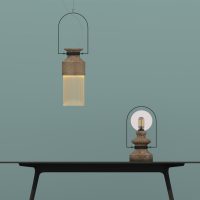
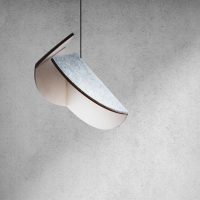



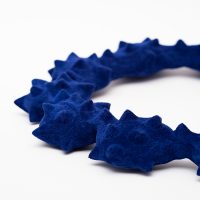
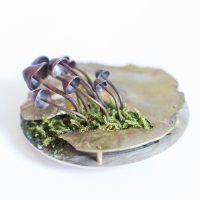







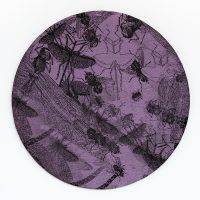
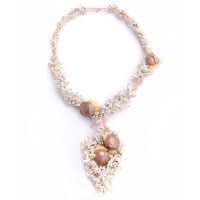


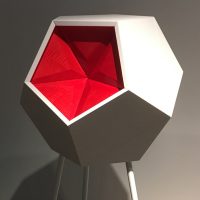

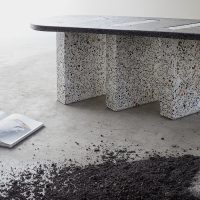


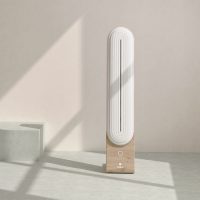




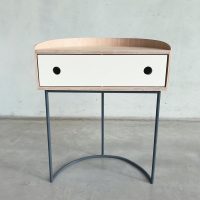
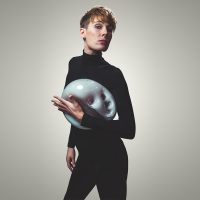
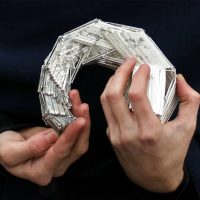


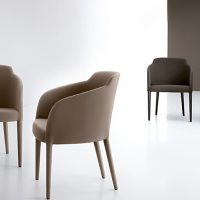
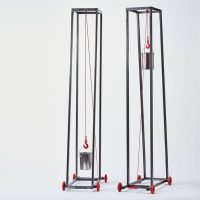

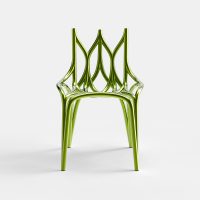

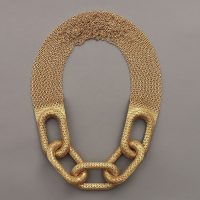
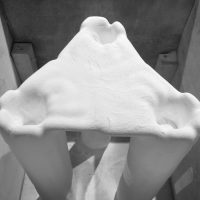


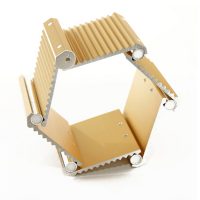
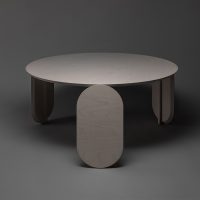
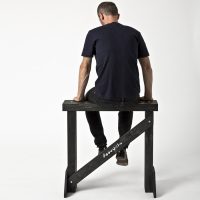

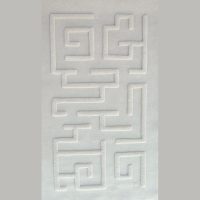
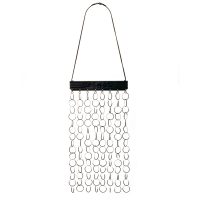



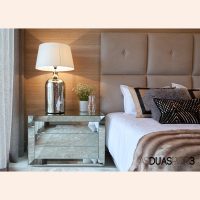
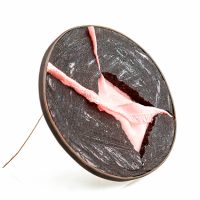

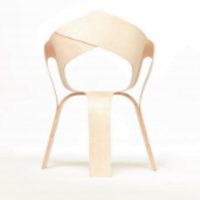
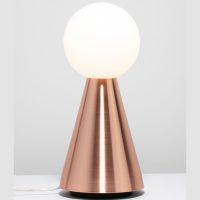

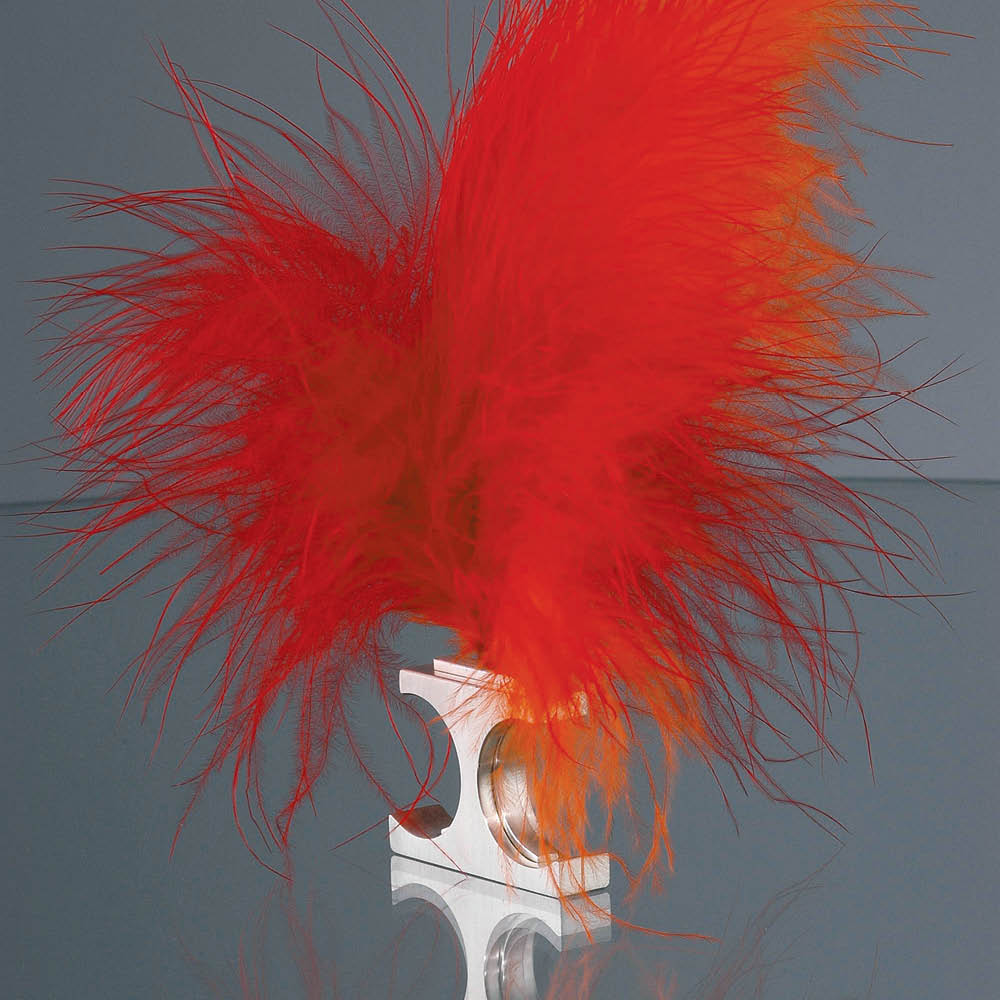
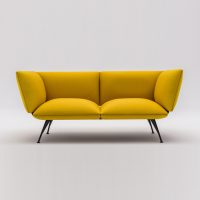

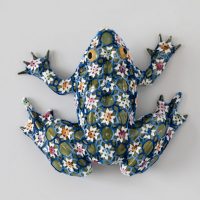



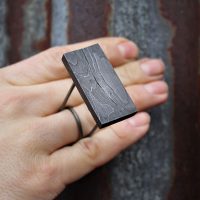
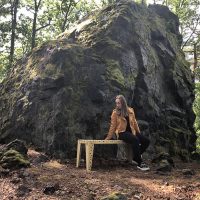

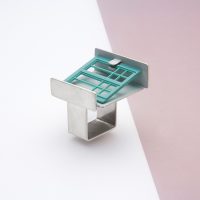

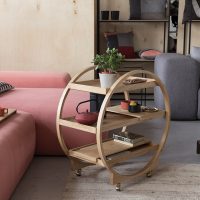
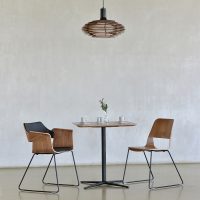
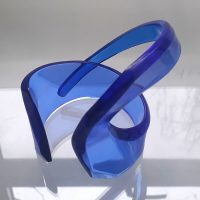
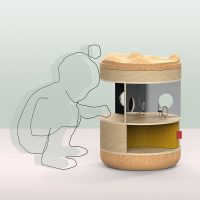

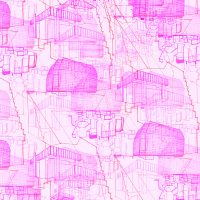


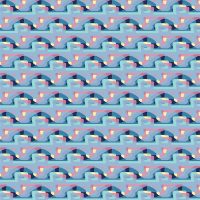
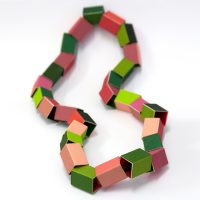
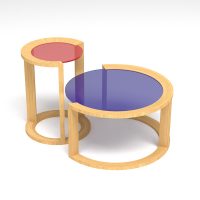
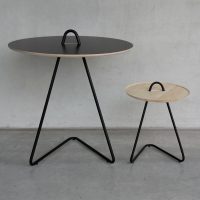
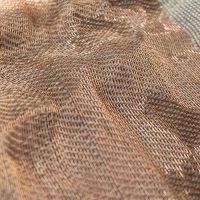
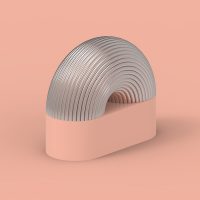
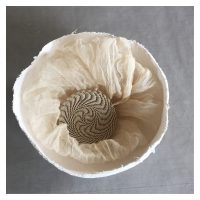

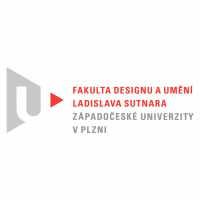

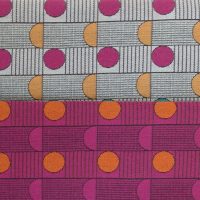


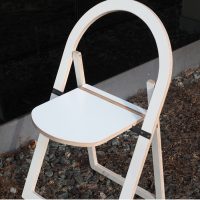
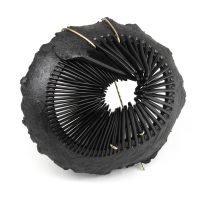




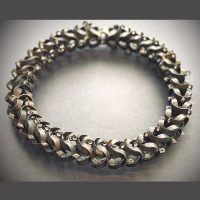
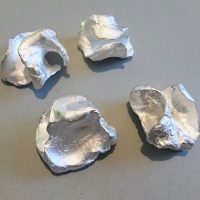

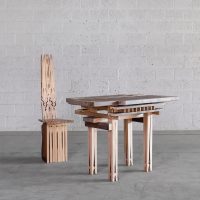
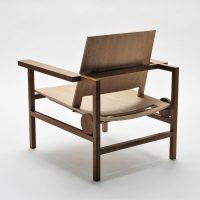
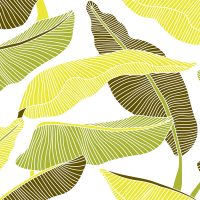



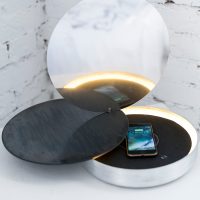




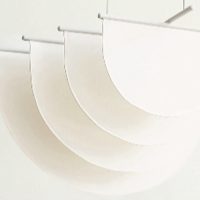
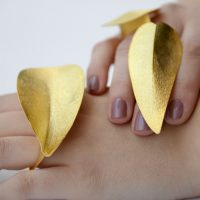
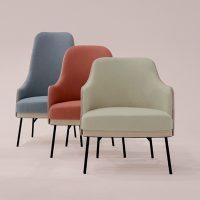


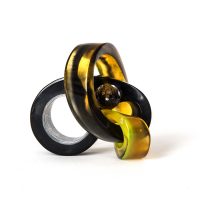
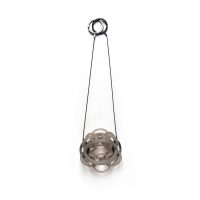
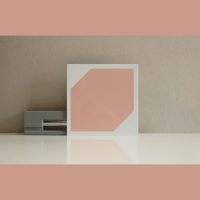


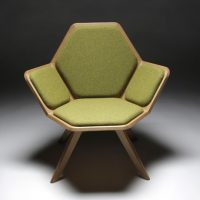

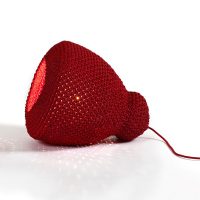



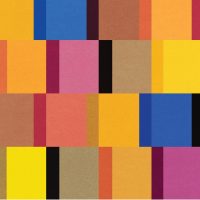
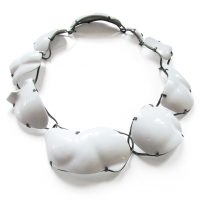
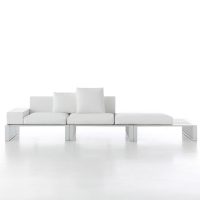

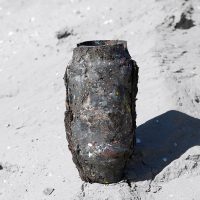
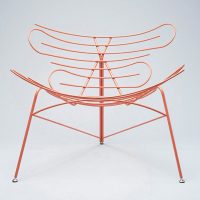
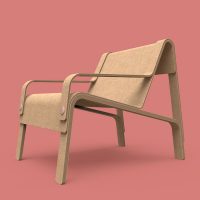

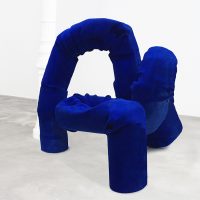
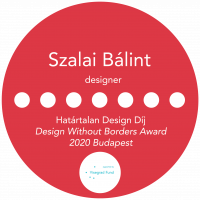
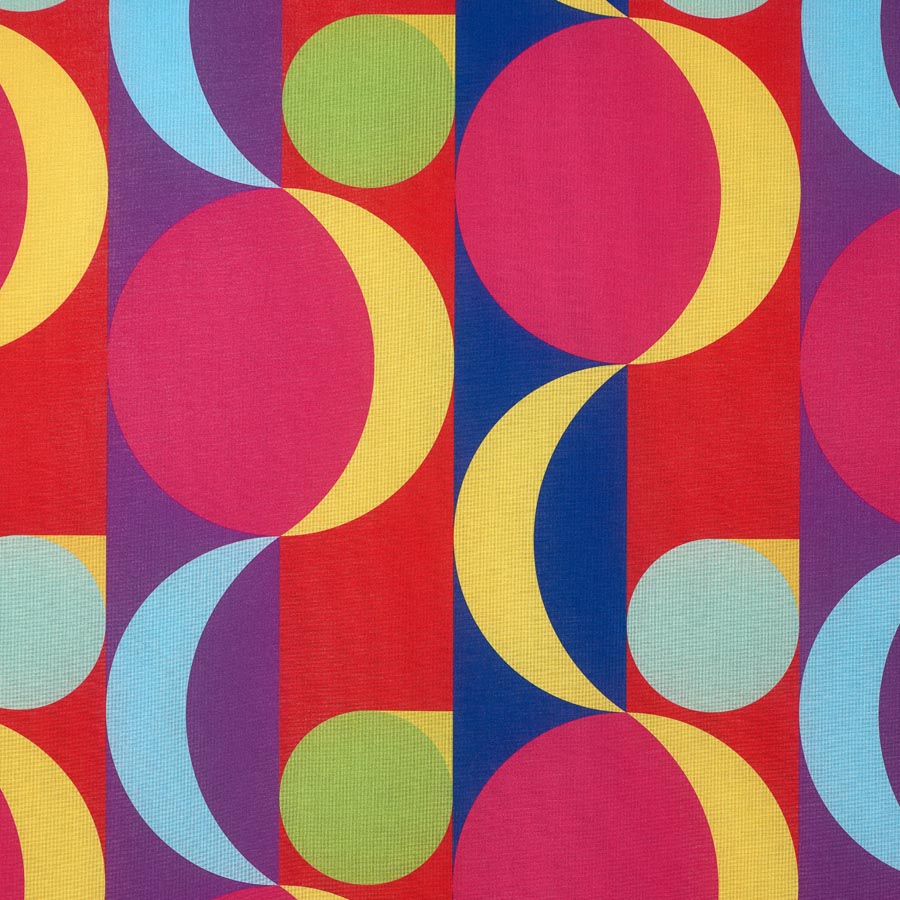
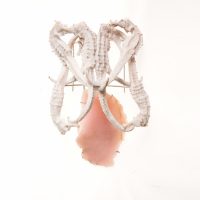
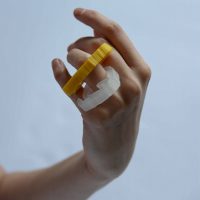
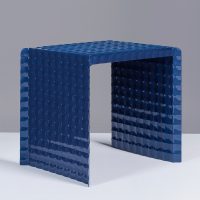
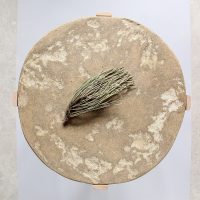



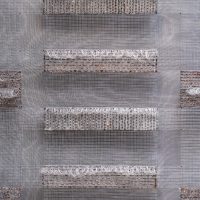

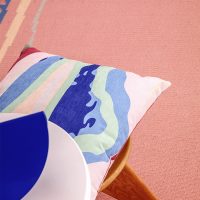
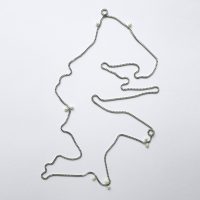


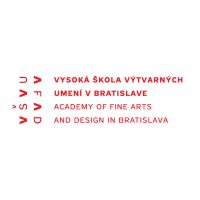
Design Without Borders professional day
It will be 10 10 2020 Saturday, between 11:00 am – 14:00 pm.
Link:
https://us02web.zoom.us/j/
Passcode: 659777
11:00 – 11:10 Diane Meyer – visual artist
11:10 – 11:20 Arpad Dobriban – visual artist
11:20 – 11:30 Luzia Vogt – jewellery artist
11:30 – 11:40 Robert Mascher – designer (FISE)
11:40 – 11:50 Shahar Livne – conceptual material designer
11:50 – 12:00 Ioanna Adrelean – jewellery artist
12:00 – 12:10 Quim Deu – designer
12:10 – 12:20 Anna Cserba – designer MOME
12:20 – 12:30 Michael Riabic – designer
12:30 – 12:40 Fabio Hendry – designer
12:40 – 12:50 Adrienn Király – designer MOME
12:50 – 13:00 Rik ten Velden – designer
13:00 – 13:10 Bálint Szalai – designer MOME (Design Without Borders Award)
13:10 – 13:20 Michał Piernikowski – director of Lodz Design Festival
13:20 – 13:30 Break
13:30 – ca 14:00 Szilvia Szigeti / Tamás Radnóti – designers – short guided tour on the Design Without Borders exhibition
The project has seen 3 textile manufacturers – Csárda Tex Kft., Lénárd Zászlókészítő Kft., Meritum Kft. Aste Bútorszövet és Lakástextil – and 20 textile designer applied artists from various generations and styles jointly develop jacquard, dobby, digitally printed and custom-design collections in the past 5 consecutive years. Participating designers are free to use the prototype collection of more than 150 pattern and colour variants. Additionally, together they seek further long-term retail and development possibilities and international relations. At the same time, designers have an ongoing appearance opportunity in the Eventuell Gallery.
The newest results can be viewed at the Design Without Borders exhibition; the full collection will go on display in the FUGA Budapest Center of Architecture in December.
A smaller cross-section of TEXHIBITION will appear in Bratislava and Vienna as part of the Design Without Borders exhibition in 2021, and a compilation selection of the past 5 years will be on show at the Lodz Design Festival.
It has become a tradition for TEXHIBITION too to showcase the works of foreign designers besides the joint developments. In 2020 two MA students of VSVU’s Department of Textiles will participate in the exhibition.



